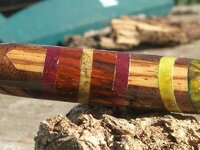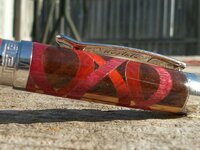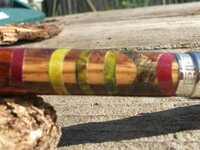alphageek
Former Moderator
Dean, I'm not sure and I could be wrong but the chart shows the Supergold best for rubber and good for hinge. I would guess that's a flex CA
Roy, I don't see any way to get "flex" from that chart other that the 2 products named flex. That chart shows 5 different products as best for rubber. That chart has nothing to do with the flexibility of the product. It is a chart of which of their CA glues are recommended for which materials. ( wood, rubber,etc.).
One thing that may not be clear to people is what they mean by CA hinge. Those of us who have built model airplanes in the past know what those are... Most penturners probably do not. A CA hinge is a sandwich .. It is normally a layer of Mylar with a layer of fabric or paper on top and bottom. A slit is made into the control surfaces of the model airplane and the hinge is inserted. Thin CA is then wicked into the slot to bond the hinge material to the wing or tail surfaces. The CA holds in the hinge, it doesn't make it.
In general any THIN CA glue is good for these "CA hinges"... This company just makes one that it markets specifically for that. Maybe it works better for the purpose they are listing... Maybe it works better for pens too.... However, this chart does nothing to actually prove which contains any "flex agents".




